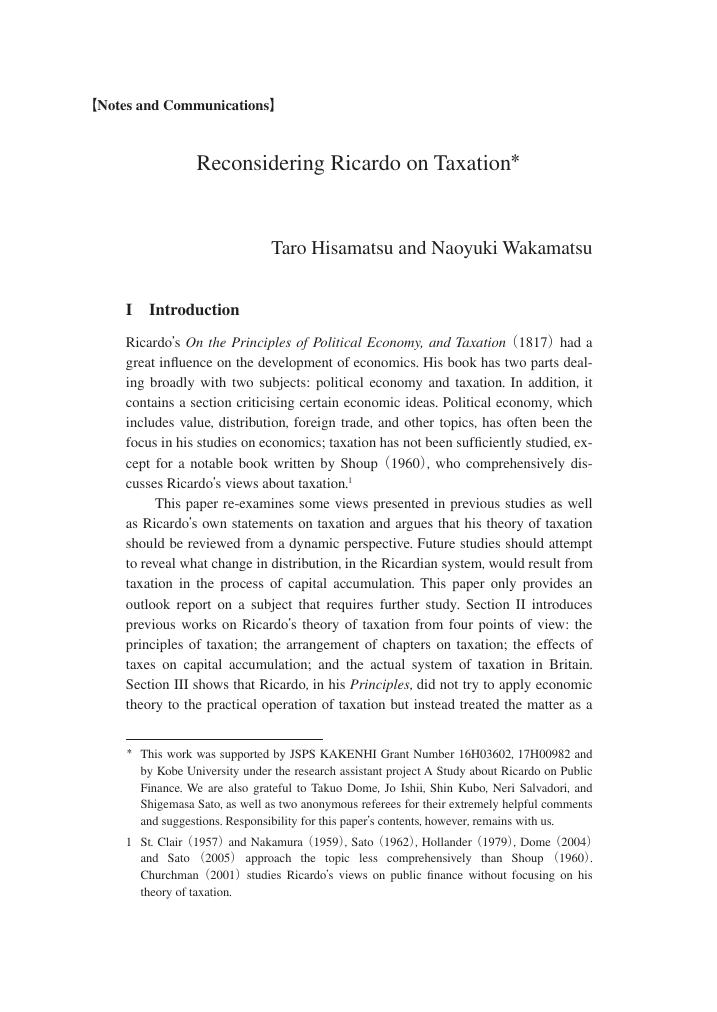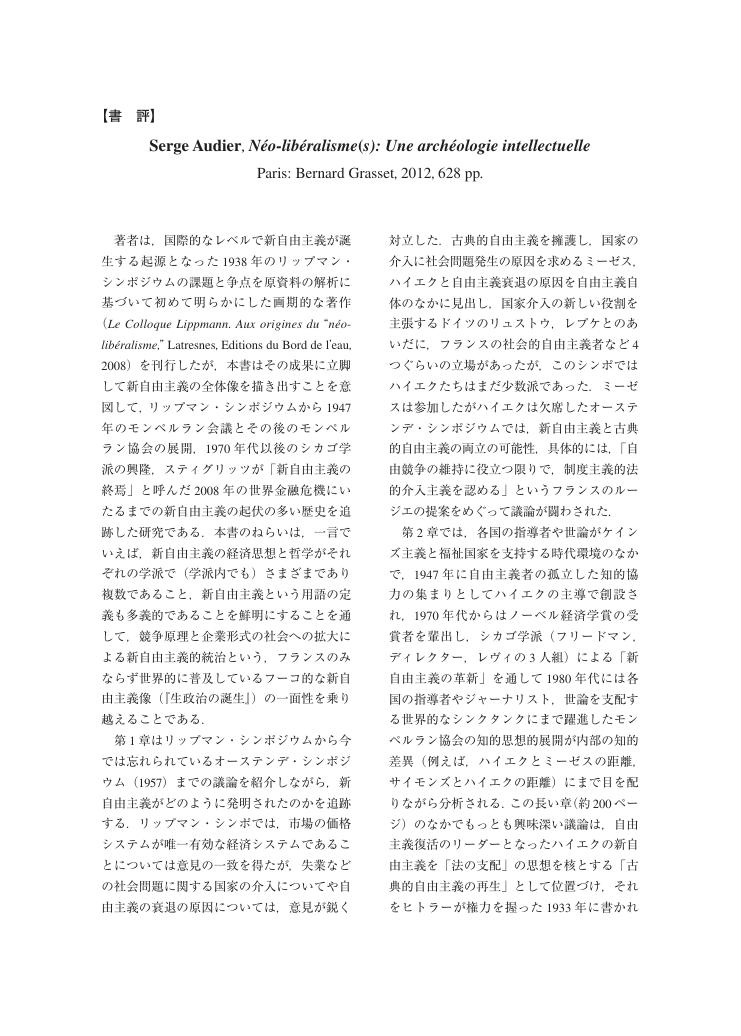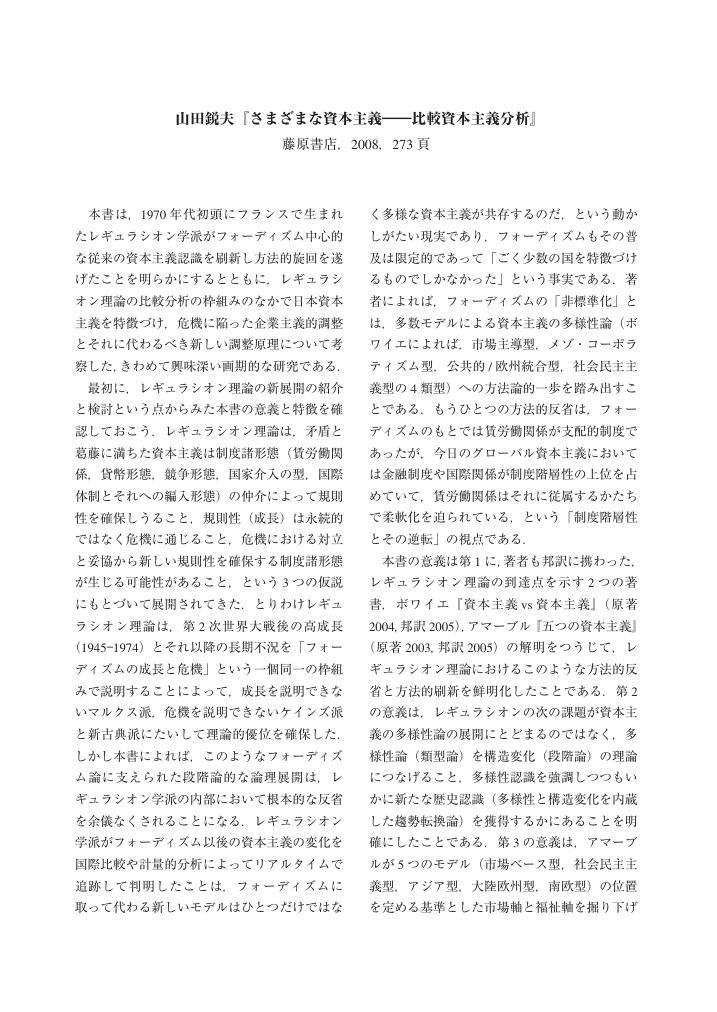1 0 0 0 OA 高度情報化社会における地域システムの変容
- 著者
- 寺阪 昭信 若林 芳樹 中林 一樹 阿部 和俊
- 出版者
- The Association of Japanese Geographers
- 雑誌
- Geographical review of Japan, Series B (ISSN:02896001)
- 巻号頁・発行日
- vol.61, no.1, pp.159-173, 1988-05-31 (Released:2008-12-25)
- 参考文献数
- 19
- 被引用文献数
- 2 3
本論文は,情報の伝達が空間に果たしている役割を,高度情報化社会といわれている現在の日本の状況のなかで捕らえてみることにある。コンピュータ技術の発展と通信のデジタル化による新しいネットワークの形成は, 1982年の第2次通信の自由化により,ニューメディアの進展となって現れた。地域的なネットワークの例として, NTTによるINSモデルの実験は東京武蔵野・三鷹地区で1984年から行われたが,これを実用化するまでには解決すべき多くの問題があることが明らかとなった。 CATVは初期の難視聴対策から出発して,ニューメディアとして普及するにまでに至った。可視チャンネル数の増加に加えて自主放送を行うことにより,地方都市では地域活動の活性化と自治体と住民をつなぐ役割を果たし,農村地区では地域の振興に,ニュータウンや大都市域では住民への情報の供給やコミュニティーの形成に役立つ可能性を開いている。 情報化の進展にともない,企業の分散が予測されたが,東京区部,とくに都心3区への中枢管理機能はかえって集中する傾向が見られる。これはマネージメントのための情報を求める企業の立地行動によるものである。さらに,最近では東京は世界的な規模での金融市場としての重要度を高めてきたことから,外資系企業のオフィスの立地が盛んになってきている。その需要にたいしてオフィス用ビルの建設が進んでいるが,不足ぎみなので値上がりが著しい。こうして都心のビジネス地区は拡大している。 このような動向から,日本における情報の地域格差は拡大している。東京を中心とする首都圏への情報の集中は著しく,大阪を初めとする他の大都市や地方都市の比重は相対的に低下している。民間における情報化の進展や情報サービス業の発展のほかにも,郵政省のテレトピア計画や通産省のニューメディアコミュニティー構想など,政府は情報化の進展をはかっている。これらが実現すると地域社会や住民の生活を大きく変える可能性がある。このような社会の変化に対して,我が国の地理学からの研究は立ち遅れている。
1 0 0 0 OA F・ベイコン思想に於ける善について
- 著者
- 若林 明
- 出版者
- 日本イギリス哲学会
- 雑誌
- イギリス哲学研究 (ISSN:03877450)
- 巻号頁・発行日
- vol.1, pp.35-44, 1978-04-01 (Released:2018-06-25)
1 0 0 0 OA 布施圭司著『ヤスパース 交わりとしての思惟―暗号思想と交わり思想』
- 著者
- 若見 理江
- 出版者
- 宗教哲学会
- 雑誌
- 宗教哲学研究 (ISSN:02897105)
- 巻号頁・発行日
- vol.35, pp.118-121, 2018-03-31 (Released:2018-05-11)
1 0 0 0 OA ハイデガーにおける「存在の問い」と「倫理の問い」
- 著者
- 若見 理江
- 出版者
- 宗教哲学会
- 雑誌
- 宗教哲学研究 (ISSN:02897105)
- 巻号頁・発行日
- vol.20, pp.29-40, 2003 (Released:2019-03-21)
Es ist immer wieder kritisiert worden, daß es Heideggers Philosophie an der Ethik fehlt. Zwar geht es ihm ausschließlich um “Sein”, und er thematisiert in seinen Werken die Ethik nicht, aber in Sein und Zeit versucht Heidegger, Theorie und Praxis zu einigen, und dabei sagt er, daß “die praktische Seite” nicht als “beigefügte” 》Ethik《 “ergänzt” werden darf. Das bedeutet m. E., daß er sich in Sein und Zeit mit der Frage nach der Ethik beschäftigt hat. Daher zeige ich, daß die Frage nach dem Sein eng mit der Frage nach der Ethik verbunden ist. Heidegger behauptet, daß die “Eigentlichkeit” dem Dasein von außen nicht aufgezwungen werden darf. Darum verwendet er eine solche Methode, nach der das Dasein selbst die eigentliche Seinsweise erwählt. Diese Methode heißt “die formale Anzeige”, die Heidegger schon in den frühen Freiburger Vorlesungen ausgebildet hat, um nach “dem faktischen Leben” vor dem Schema des Gegensatzes von “Sein und Sollen” zu fragen. Daraus entwickelt sich die “Sorge” als Sein des Daseins in Sein und Zeit. Eben diese Sorge ist als besorgende Fürsorge, nämlich als Beziehung auf die Dinge und die Anderen, jeweils schon vor jedem Verhalten vorausgesetzt. Er führt die Begriffe “Angst”, “Tod”, “Gewissen” und “Schuld” ein und läßt dadurch das Dasein selbst seine Sorge zur Eigentlichkeit modifizieren. Nach Heidegger ist es diese Eigentlichkeit, die die Anderen in ihrem eigensten Seinkönnen “sein” läßt.
1 0 0 0 OA 集団安全保障と安全保障理事会の役割
- 著者
- 筒井 若水
- 出版者
- 世界法学会
- 雑誌
- 世界法年報 (ISSN:09170421)
- 巻号頁・発行日
- vol.1994, no.14, pp.23-36, 1994-12-20 (Released:2011-02-07)
- 参考文献数
- 13
1 0 0 0 OA 戦後日本と国際連合
- 著者
- 筒井 若水
- 出版者
- 世界法学会
- 雑誌
- 世界法年報 (ISSN:09170421)
- 巻号頁・発行日
- vol.1989, no.9, pp.1-6, 1989-10-15 (Released:2011-02-07)
1 0 0 0 OA 組織理論の発展において社会ネットワーク論の与えた新たな視点
- 著者
- 若林 直樹
- 出版者
- 経済社会学会
- 雑誌
- 経済社会学会年報 (ISSN:09183116)
- 巻号頁・発行日
- vol.37, pp.38-45, 2015 (Released:2016-03-25)
- 著者
- 若森 章孝
- 出版者
- 経済学史学会
- 雑誌
- 経済学史研究 (ISSN:18803164)
- 巻号頁・発行日
- vol.60, no.1, pp.207-208, 2018 (Released:2019-11-05)
1 0 0 0 OA Reconsidering Ricardo on Taxation
- 著者
- 久松 太郎 若松 直幸
- 出版者
- The Japanease Society for the History of Economic Thought
- 雑誌
- 経済学史研究 (ISSN:18803164)
- 巻号頁・発行日
- vol.60, no.2, pp.97-101, 2019 (Released:2019-09-04)
1 0 0 0 OA カール・ポランニー研究の新地平と課題 Gareth Dale の 3 冊の書籍を読んで
- 著者
- 若森 みどり
- 出版者
- 経済学史学会
- 雑誌
- 経済学史研究 (ISSN:18803164)
- 巻号頁・発行日
- vol.60, no.1, pp.179-188, 2018 (Released:2019-09-03)
- 著者
- 若森 章孝
- 出版者
- 経済学史学会
- 雑誌
- 経済学史研究 (ISSN:18803164)
- 巻号頁・発行日
- vol.58, no.2, pp.86-88, 2017 (Released:2019-11-30)
1 0 0 0 OA リカードウ『原理』第29章における公債制度論
- 著者
- 若松 直幸
- 出版者
- 経済学史学会
- 雑誌
- 経済学史研究 (ISSN:18803164)
- 巻号頁・発行日
- vol.59, no.1, pp.43-62, 2017 (Released:2019-09-01)
- 著者
- 若森 章孝
- 出版者
- 経済学史学会
- 雑誌
- 経済学史研究 (ISSN:18803164)
- 巻号頁・発行日
- vol.56, no.2, pp.125-126, 2015 (Released:2019-11-30)
- 著者
- 若森 みどり
- 出版者
- 経済学史学会
- 雑誌
- 経済学史研究 (ISSN:18803164)
- 巻号頁・発行日
- vol.54, no.2, pp.83-85, 2013 (Released:2019-10-31)
- 著者
- 若田部 昌澄
- 出版者
- 経済学史学会
- 雑誌
- 経済学史研究 (ISSN:18803164)
- 巻号頁・発行日
- vol.53, no.2, pp.112-113, 2012 (Released:2019-10-30)
- 参考文献数
- 2
- 著者
- 若田部 昌澄
- 出版者
- 経済学史学会
- 雑誌
- 経済学史研究 (ISSN:18803164)
- 巻号頁・発行日
- vol.52, no.2, pp.147-148, 2011 (Released:2019-10-28)
- 参考文献数
- 3
1 0 0 0 OA 山田鋭夫『さまざまな資本主義―比較資本主義分析』 藤原書店,2008,273 頁
- 著者
- 若森 章孝
- 出版者
- 経済学史学会
- 雑誌
- 経済学史研究 (ISSN:18803164)
- 巻号頁・発行日
- vol.51, no.2, pp.124-125, 2009 (Released:2019-08-08)
- 著者
- 若田部 昌澄
- 出版者
- The Japanease Society for the History of Economic Thought
- 雑誌
- 経済学史研究 (ISSN:18803164)
- 巻号頁・発行日
- vol.51, no.2, pp.18-32, 2009 (Released:2019-08-08)
- 参考文献数
- 49
This paper proposes a way to understand the evolution of macroeconomic thinking. The macroeconomic thinking, not necessarily synonymous with macroeconomics, has been dealing with the questions of money and business cycles. Money and business cycles, in turn, have been closely connected with the international monetary arrangements such as the Gold Standard, the Bimetallic Standard, the Bretton Woods system, and the Flexible Exchange Rate. I shall argue that the evolution of macroeconomic thinking is best understood as the responses of economists to, and their interaction with, the changing monetary and exchange rate regimes. The theoretical foundation of the paper is rather simple: the so-called trilemma, or “irreconcilable or impossible trinity.” A policymaker cannot simultaneously choose a fixed exchange rate, free mobility of capital, and domestic price stability via independent monetary policy. Facing this constraint, the policymaker can, at most, choose two from among these three goals. Therefore, further questions emerge: which goal or goals should be given priority from among these three, and what is the exact tool or mechanism that can ensure the achievement of preset policy goals. The answer to the first question determines the nature of international monetary arrangements, which, in turn, are shaped by political and economic factors. With respect to the second issue, institutions, or what we might call the institutional or social governance technology, play a crucial role. Throughout history, concerns over “unrestrained inflation” have been widespread, since there have always been strong incentives for a government to raise seigniorage by over-issuing money. The choice of international monetary arrangements depends on the availability, credibility, and effectiveness of a specific social governance technology that acts as a constraint upon policymakers, which, in turn, depend on the specific political and economic structure. JEL classification numbers: B 20, B 22, E 42.
1 0 0 0 OA カール・ポランニーの「経済社会学」の誕生 『大転換』から『人間の経済』へ
- 著者
- 若森 みどり
- 出版者
- 経済学史学会
- 雑誌
- 経済学史研究 (ISSN:18803164)
- 巻号頁・発行日
- vol.51, no.2, pp.33-50, 2009 (Released:2019-08-08)
- 参考文献数
- 50
- 著者
- 若田部 昌澄
- 出版者
- The Japanease Society for the History of Economic Thought
- 雑誌
- 経済学史研究 (ISSN:18803164)
- 巻号頁・発行日
- vol.48, no.2, pp.98-101, 2006-12-20 (Released:2010-08-05)
- 参考文献数
- 9
















